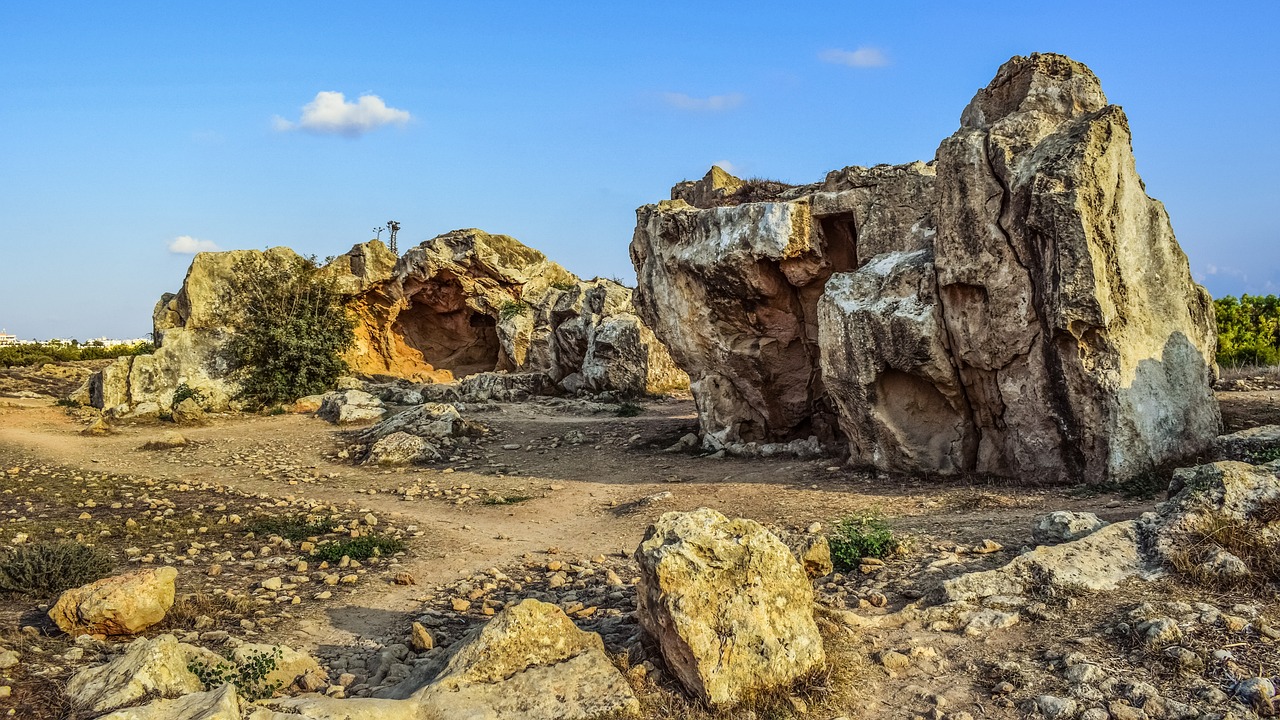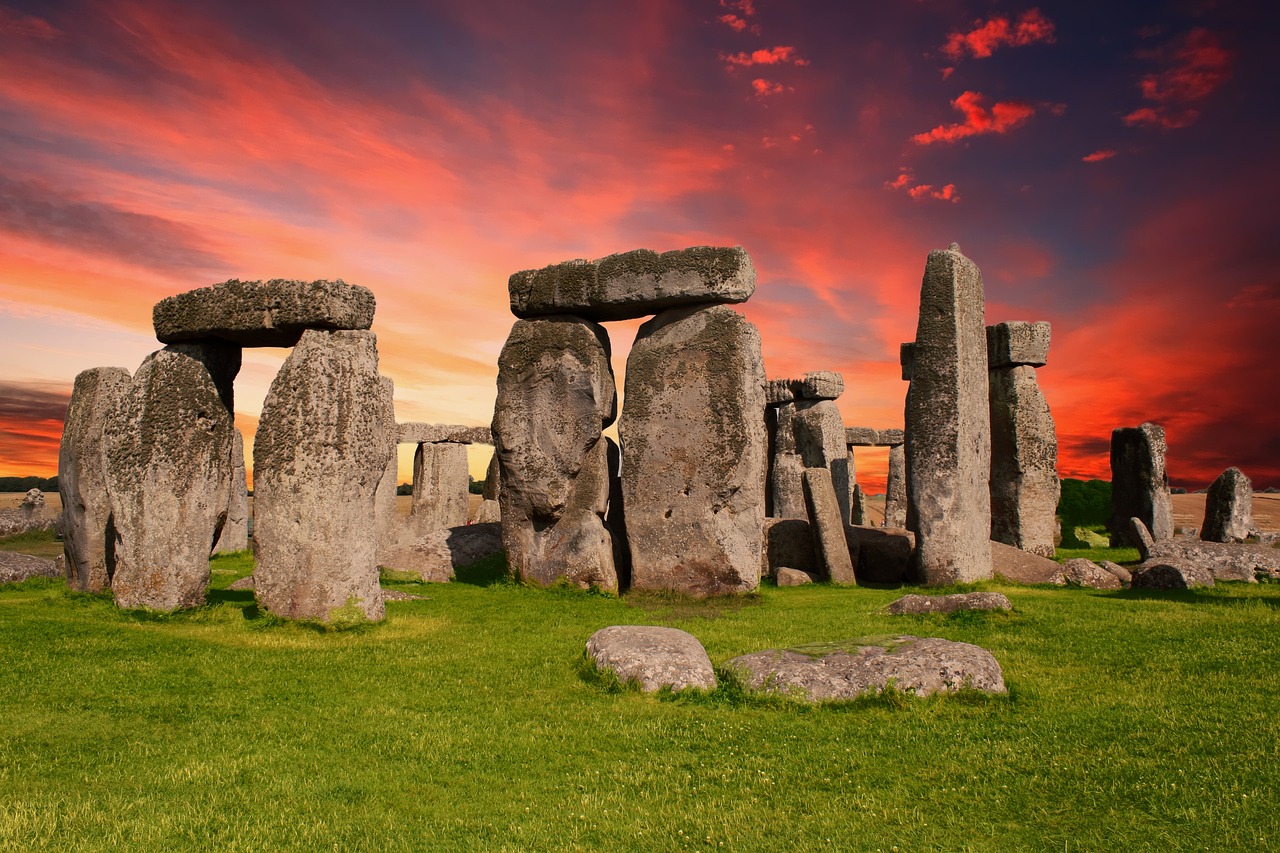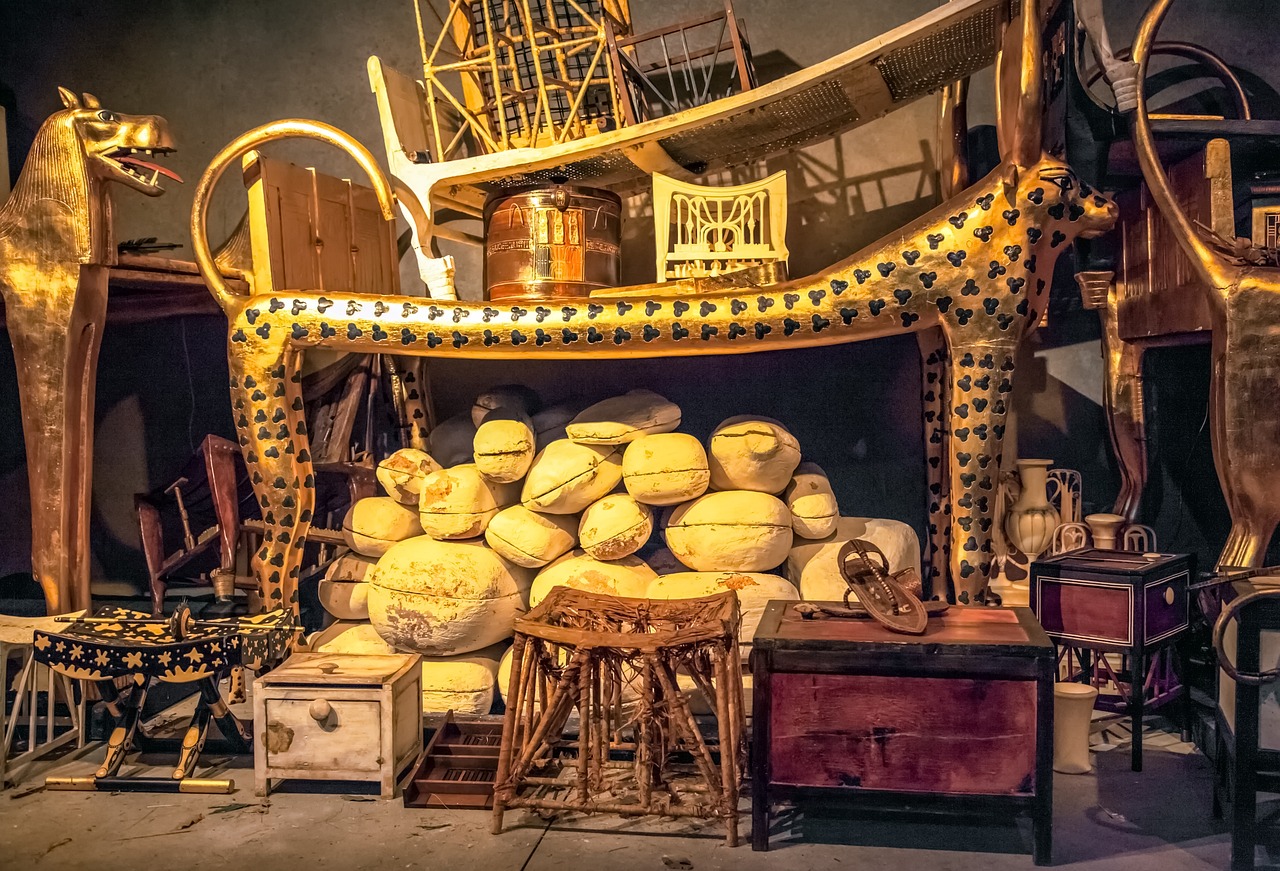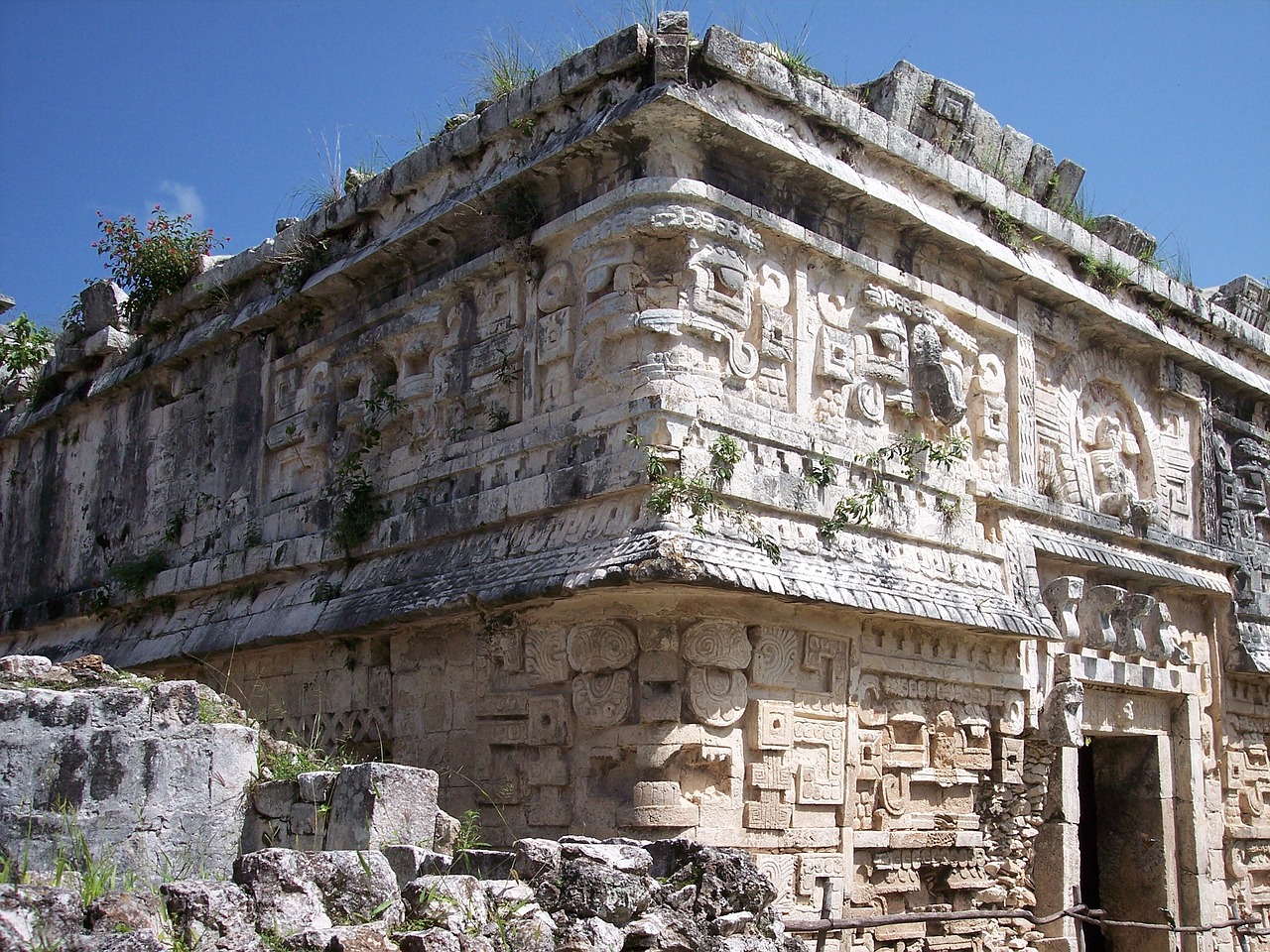The Importance of Archaeological Surveys in Heritage Management
Archaeological surveys are indispensable tools in the field of heritage management, serving as essential mechanisms for identifying, assessing, and safeguarding cultural sites of historical significance. These surveys play a vital role in unraveling the mysteries of the past, preserving invaluable artifacts, and guiding decision-making processes aimed at the sustainable conservation and development of our rich cultural heritage.
One of the primary benefits of archaeological surveys lies in their contribution to the preservation of cultural identity. By meticulously documenting and protecting historical sites and artifacts, these surveys help communities safeguard their heritage and traditions, ensuring that the essence of their cultural identity is not lost to the sands of time.
Moreover, archaeological surveys serve as crucial safeguards against irreversible damage to potential archaeological sites. By identifying these sites and implementing protective measures, surveys prevent development projects from inadvertently destroying invaluable historical resources, thus preserving our collective heritage for future generations.
Additionally, the findings of archaeological surveys offer valuable insights for urban planners, enabling them to integrate historical sites seamlessly into urban development plans. This integration strikes a delicate balance between modernization and heritage preservation, ensuring that the historical fabric of our cities remains intact amidst rapid urbanization.
Furthermore, archaeological surveys create unique educational opportunities for a diverse audience, ranging from the general public to researchers and students. By shedding light on the historical and cultural significance of archaeological sites, these surveys foster a deeper understanding and appreciation of our shared past, enriching educational experiences for all.
Conservation strategies benefit immensely from the data gathered through archaeological surveys, enabling the formulation of effective plans for the long-term protection and sustainable management of archaeological sites. These strategies ensure that our cultural treasures are safeguarded for posterity, allowing future generations to inherit a rich tapestry of historical legacy.
Legal protection measures for archaeological sites are bolstered by the invaluable data provided by surveys, ensuring compliance with heritage preservation laws and regulations. This legal framework safeguards our cultural heritage from exploitation and destruction, reinforcing the importance of responsible stewardship of our historical assets.
Moreover, archaeological surveys play a pivotal role in the development of cultural tourism by highlighting significant historical sites that attract visitors and contribute to the local economy. These sites serve as magnets for tourists seeking to immerse themselves in the rich history and heritage of a region, fostering economic growth and cultural exchange.
Lastly, community engagement and participation are essential components of successful heritage management, and archaeological surveys serve as catalysts for fostering a sense of ownership and pride among local communities. By involving communities in the preservation of their heritage, surveys encourage collaborative efforts towards safeguarding our shared cultural legacy for generations to come.

Preservation of Cultural Identity
Preserving cultural identity is like safeguarding a precious heirloom passed down through generations, each artifact and site holding a piece of the community's history and traditions. Archaeological surveys act as the guardians of this legacy, ensuring that the threads connecting the past to the present remain unbroken. By meticulously documenting and protecting historical sites and artifacts, these surveys weave a tapestry of cultural identity that tells the story of who we are and where we come from.
Imagine a world where ancient temples crumble under the weight of progress, where once vibrant marketplaces are replaced by concrete jungles. Without the diligent work of archaeological surveys, this nightmare could become a reality, erasing the footprints of our ancestors and leaving future generations disconnected from their roots. These surveys serve as time capsules, preserving not just physical structures but the intangible essence of a community's soul.
Through the lens of archaeological surveys, communities can look back in time and see the reflections of their past selves. Each artifact unearthed is a mirror that reflects the customs, beliefs, and daily lives of those who came before us. By protecting these treasures, we ensure that our cultural identity remains vibrant and alive, a beacon guiding us through the complexities of the modern world.
Moreover, the preservation of cultural identity through archaeological surveys is not just a duty but a celebration. It is a testament to the resilience of human creativity and ingenuity, a homage to the enduring spirit of communities that have weathered the storms of time. By cherishing and safeguarding our heritage, we honor the sacrifices and triumphs of those who paved the way for our existence, ensuring that their stories are not lost to the winds of change.

Preventing Irreversible Damage
Archaeological surveys play a crucial role in heritage management by identifying, assessing, and preserving cultural sites. These surveys help in understanding the past, protecting historical artifacts, and informing decision-making processes for sustainable preservation and development.
Archaeological surveys contribute to preserving the cultural identity of communities by safeguarding historical sites and artifacts that hold significance in their heritage and traditions.
Conducting archaeological surveys is essential to prevent irreversible damage to valuable historical resources. By identifying potential archaeological sites, these surveys ensure that development projects do not harm significant cultural heritage.
Survey findings provide valuable insights for urban planners to incorporate historical sites into development plans, ensuring a balance between modernization and preservation of heritage.
Archaeological surveys create educational opportunities for the public, researchers, and students to learn about the history and cultural significance of archaeological sites.
Surveys help in formulating effective conservation strategies for archaeological sites, ensuring their long-term protection and sustainable management for future generations.
Survey data aids in establishing legal protection measures for archaeological sites, ensuring compliance with heritage preservation laws and regulations.
Archaeological surveys play a key role in developing cultural tourism by highlighting significant historical sites that attract visitors and contribute to the local economy.
Engaging local communities in archaeological surveys fosters a sense of ownership and pride in preserving their heritage, leading to collaborative efforts in heritage management and conservation.
Stay tuned for the FAQ section coming soon!

Informing Urban Planning
Archaeological surveys play a crucial role in heritage management by identifying, assessing, and preserving cultural sites. These surveys help in understanding the past, protecting historical artifacts, and informing decision-making processes for sustainable preservation and development.
Archaeological surveys contribute to preserving the cultural identity of communities by safeguarding historical sites and artifacts that hold significance in their heritage and traditions.
By conducting surveys, potential archaeological sites are identified and protected from development projects that could cause irreversible damage to valuable historical resources.
Urban planning is not just about the present; it's about creating a future that respects the past. Archaeological surveys play a vital role in informing urban planning decisions by providing insights into historical sites that can be integrated into modern development plans. Imagine a city where skyscrapers stand side by side with ancient ruins, creating a unique blend of history and modernity. These surveys help urban planners strike a balance between progress and preservation, ensuring that the rich tapestry of our heritage is woven into the fabric of our cities.
Archaeological surveys create educational opportunities for the public, researchers, and students to learn about the history and cultural significance of archaeological sites.
Surveys help in formulating effective conservation strategies for archaeological sites, ensuring their long-term protection and sustainable management for future generations.
Survey data aids in establishing legal protection measures for archaeological sites, ensuring compliance with heritage preservation laws and regulations.
Archaeological surveys play a key role in developing cultural tourism by highlighting significant historical sites that attract visitors and contribute to the local economy.
Engaging local communities in archaeological surveys fosters a sense of ownership and pride in preserving their heritage, leading to collaborative efforts in heritage management and conservation.
Stay tuned for answers to some common questions about archaeological surveys and heritage management!

Educational Opportunities
Archaeological surveys open doors to a world of educational opportunities for a wide range of audiences. For the public, these surveys serve as a gateway to delve into the rich history and cultural significance of ancient sites. By participating in guided tours or workshops organized around archaeological findings, individuals can not only learn about the past but also gain a deeper appreciation for the heritage that shapes their present.
Researchers and scholars benefit immensely from the data collected through these surveys. The detailed information gathered during archaeological investigations provides valuable insights into the lifestyles, beliefs, and practices of past civilizations. This data acts as a treasure trove for historians, archaeologists, and anthropologists, enabling them to piece together the puzzle of human history and share their discoveries with the world.
For students pursuing studies in archaeology or related fields, engaging with archaeological surveys offers a hands-on learning experience that goes beyond textbooks. Fieldwork opportunities provided by these surveys allow students to apply theoretical knowledge in real-world settings, honing their practical skills and fostering a deeper understanding of archaeological methodologies.
Moreover, the educational impact of archaeological surveys extends to local communities living in proximity to historical sites. By involving community members in survey activities, such as artifact identification or site documentation, a sense of connection and pride is cultivated. This hands-on involvement not only educates individuals about their heritage but also instills a sense of responsibility in safeguarding and preserving these cultural treasures for future generations.

Conservation Strategies
Conservation strategies in archaeological surveys are essential for ensuring the long-term protection and sustainable management of valuable historical sites. These strategies involve a combination of proactive measures aimed at preserving the integrity and significance of archaeological sites for future generations. One key conservation strategy is the implementation of site monitoring programs, which involve regular inspections and assessments to identify any potential threats or deterioration. By closely monitoring these sites, conservationists can take timely actions to prevent further damage and deterioration.
Another crucial aspect of conservation strategies is the development of site-specific preservation plans. These plans outline detailed guidelines for the maintenance, restoration, and protection of archaeological sites based on their unique characteristics and vulnerabilities. By tailoring preservation efforts to the specific needs of each site, conservationists can ensure effective and sustainable management practices that prioritize the long-term preservation of cultural heritage.
Furthermore, community involvement is a vital component of successful conservation strategies. Engaging local communities in the preservation and management of archaeological sites not only fosters a sense of ownership and pride but also encourages sustainable practices that align with the cultural values and traditions of the community. By involving stakeholders in decision-making processes and conservation efforts, conservation strategies can benefit from diverse perspectives and local knowledge, leading to more holistic and inclusive approaches to heritage management.
Additionally, the integration of modern technologies and scientific methods plays a significant role in conservation strategies. Techniques such as remote sensing, digital mapping, and 3D modeling enable conservationists to conduct detailed assessments, monitor changes over time, and implement innovative conservation practices. By leveraging these technological advancements, conservation strategies can enhance the efficiency and effectiveness of preservation efforts while minimizing potential risks to archaeological sites.

Legal Protection and Compliance
Legal Protection and Compliance in archaeological surveys are essential aspects that ensure the preservation of valuable heritage sites. Through detailed surveys and documentation, legal frameworks can be established to protect these sites from unauthorized activities and destruction. Compliance with heritage preservation laws is crucial to maintain the integrity of archaeological sites and prevent any harm that could result from negligence or ignorance.
Moreover, the data collected from archaeological surveys serves as evidence for the historical significance of these sites, reinforcing the need for legal protection and compliance. By recognizing the importance of legal measures in heritage management, authorities can enforce regulations that safeguard these cultural treasures for future generations.

Tourism Development
Archaeological surveys play a crucial role in heritage management by identifying, assessing, and preserving cultural sites. These surveys help in understanding the past, protecting historical artifacts, and informing decision-making processes for sustainable preservation and development.
Archaeological surveys contribute to preserving the cultural identity of communities by safeguarding historical sites and artifacts that hold significance in their heritage and traditions.
By conducting surveys, potential archaeological sites are identified and protected from development projects that could cause irreversible damage to valuable historical resources.
Survey findings provide valuable insights for urban planners to incorporate historical sites into development plans, ensuring a balance between modernization and preservation of heritage.
Archaeological surveys create educational opportunities for the public, researchers, and students to learn about the history and cultural significance of archaeological sites.
Surveys help in formulating effective conservation strategies for archaeological sites, ensuring their long-term protection and sustainable management for future generations.
Survey data aids in establishing legal protection measures for archaeological sites, ensuring compliance with heritage preservation laws and regulations.
Archaeological surveys play a key role in developing cultural tourism by highlighting significant historical sites that attract visitors and contribute to the local economy.
Engaging local communities in archaeological surveys fosters a sense of ownership and pride in preserving their heritage, leading to collaborative efforts in heritage management and conservation.
Stay tuned for some common questions and answers about the importance of archaeological surveys in heritage management.

Community Engagement and Participation
Community engagement and participation are essential aspects of archaeological surveys in heritage management. When local communities are actively involved in the survey process, it creates a sense of ownership and responsibility towards preserving their cultural heritage. By engaging with residents, historians, and experts, a collaborative effort is established to protect and promote valuable archaeological sites.
Through community participation, traditional knowledge and oral histories can be integrated into the survey findings, enriching the understanding of the cultural significance of the sites. This exchange of information between experts and community members not only enhances the research process but also fosters a deeper connection to the heritage being preserved.
Moreover, involving local communities in archaeological surveys can lead to the development of sustainable management plans for heritage sites. By incorporating the perspectives and needs of residents, strategies for conservation and tourism can be tailored to benefit both the local population and visitors.
Community engagement also plays a crucial role in raising awareness about the importance of heritage preservation. Through educational programs, workshops, and public events, individuals are given the opportunity to learn about their history and the significance of archaeological sites in shaping their identity.
Furthermore, by actively involving communities in the decision-making processes related to heritage management, a sense of pride and empowerment is cultivated. Residents become advocates for the protection of their cultural heritage, leading to long-term sustainability and appreciation for the legacy left by their ancestors.
Frequently Asked Questions
- What is the purpose of archaeological surveys?
Archaeological surveys play a crucial role in heritage management by identifying, assessing, and preserving cultural sites. They help in understanding the past, protecting historical artifacts, and informing decision-making processes for sustainable preservation and development.
- How do archaeological surveys contribute to preserving cultural identity?
Archaeological surveys contribute to preserving the cultural identity of communities by safeguarding historical sites and artifacts that hold significance in their heritage and traditions.
- Why are archaeological surveys important for urban planning?
Survey findings provide valuable insights for urban planners to incorporate historical sites into development plans, ensuring a balance between modernization and preservation of heritage.
- How do archaeological surveys benefit tourism development?
Archaeological surveys play a key role in developing cultural tourism by highlighting significant historical sites that attract visitors and contribute to the local economy.
- What role do archaeological surveys play in legal protection and compliance?
Survey data aids in establishing legal protection measures for archaeological sites, ensuring compliance with heritage preservation laws and regulations.



















